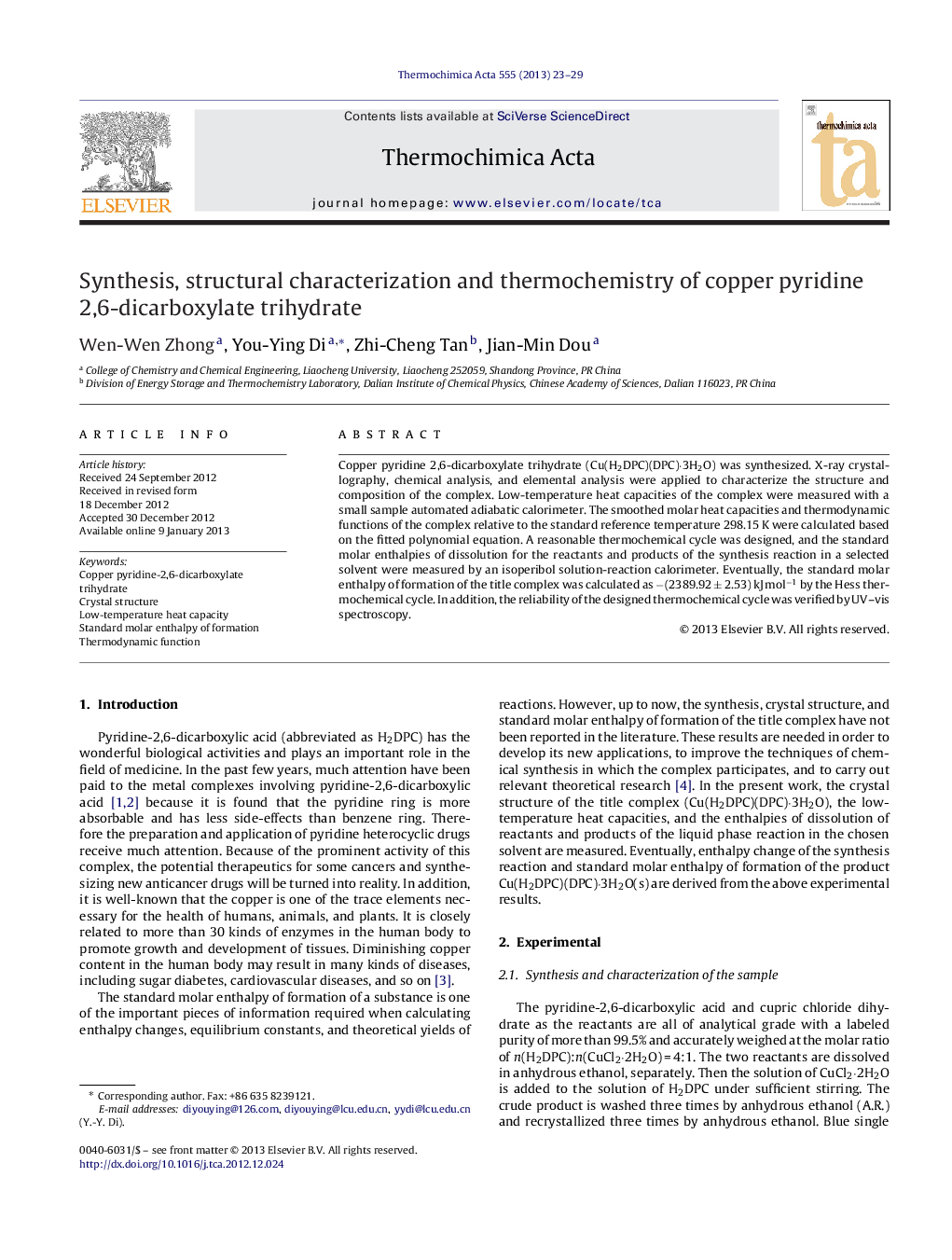| Article ID | Journal | Published Year | Pages | File Type |
|---|---|---|---|---|
| 673999 | Thermochimica Acta | 2013 | 7 Pages |
Copper pyridine 2,6-dicarboxylate trihydrate (Cu(H2DPC)(DPC)·3H2O) was synthesized. X-ray crystallography, chemical analysis, and elemental analysis were applied to characterize the structure and composition of the complex. Low-temperature heat capacities of the complex were measured with a small sample automated adiabatic calorimeter. The smoothed molar heat capacities and thermodynamic functions of the complex relative to the standard reference temperature 298.15 K were calculated based on the fitted polynomial equation. A reasonable thermochemical cycle was designed, and the standard molar enthalpies of dissolution for the reactants and products of the synthesis reaction in a selected solvent were measured by an isoperibol solution-reaction calorimeter. Eventually, the standard molar enthalpy of formation of the title complex was calculated as −(2389.92 ± 2.53) kJ mol−1 by the Hess thermochemical cycle. In addition, the reliability of the designed thermochemical cycle was verified by UV–vis spectroscopy.
Graphical abstractA novel complex, copper pyridine 2,6-dicarboxylate trihydrate (Cu(H2DPC)(DPC)·3H2O) was synthesized X-ray crystallography, chemical analysis, and elemental analysis were applied to characterize the structure and composition of the complex. Low-temperature heat capacities of the complex were measured. A polynomial equation of heat capacities as a function of temperature was fitted. The smoothed molar heat capacities and thermodynamic functions of the complex relative to the standard reference temperature 298.15 K were calculated. Standard molar enthalpies of dissolution for the reactants and products of the synthesis reaction in a selected solvent were measured. Standard molar enthalpy of formation of the title complex was calculated.Figure optionsDownload full-size imageDownload as PowerPoint slideHighlights► Crystal structure of copper pyridine 2,6-dicarboxylate trihydrate was determined. ► Low-temperature heat capacities of the compound were measured. ► Smoothed molar heat capacities and thermodynamic functions were calculated. ► Standard molar enthalpy of formation of the title complex was derived.
